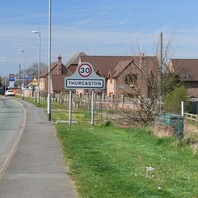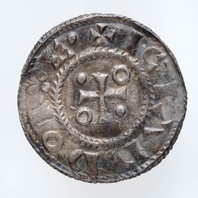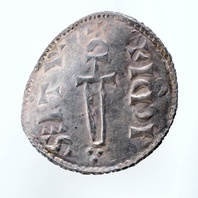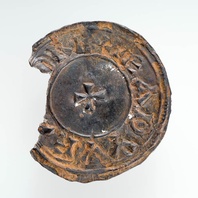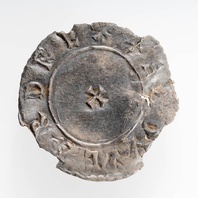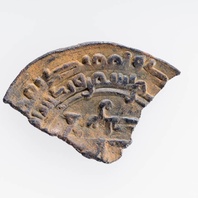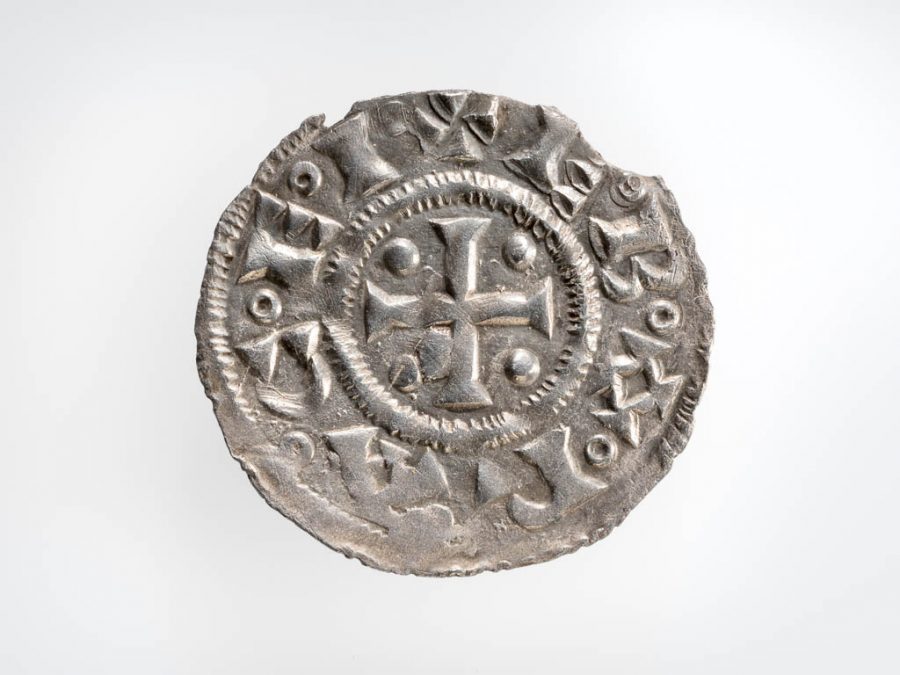
Description
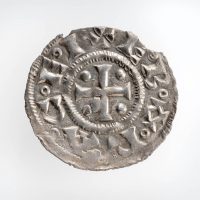
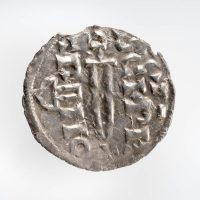
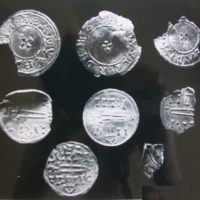
Northumbrian Viking Penny (CM.952-2000)
A silver penny from the Scandinavian kingdom of York found at Thurcaston, Leicestershire
This Sword St. Peter type silver penny is not associated with any particular ruler but was minted in the Viking kingdom of Northumbria. The coin features a sword image which is usually considered to represent the sword of St Peter, whose name features on the same side of the coin, and a hammer which is often taken to be Thor’s hammer, thus mixing the iconography of the Christian and Norse religions. It was found as part of the Thurcaston hoard which was probably buried c.923-925 CE, approximately five years after Leicester had been retaken by Mercia (c.918). The coins in the hoard are Anglo-Saxon, Arabic and Danelaw issues, showing the wide-ranging contacts between societies at this time. After the establishment of the Danelaw, some Viking leaders decided to mint their own coins to solidify their legitimacy in the eyes of the local populace. This created a hybrid economy where some members of the Danelaw used bullion and others used coins. The bullion economy resulted in some coins being cut into pieces to pay for items.
Object Type
- Coin
Date
- circa 921 — 927
Style
Ascribed Culture
Original/Reproduction
- Original
Material
Collection
- Viking Objects
Current Location
- The Fitzwilliam Museum, Cambridge
Keywords
- coin, Danelaw Saga, Fitzwilliam_Museum, Leicestershire, Northumbria, penny, Portable_Antiquities_Scheme, silver, Thurcaston hoard, Viking
Further information
You can see the original at The Fitzwilliam Museum, Cambridge.
This object is related to
Thurcaston, Leicestershire.
Find out about Thurcaston, Leicestershire.
Acknowledgements
(c) Portable Antiquities Scheme, CC BY-SA 4.0
(c) The Fitzwilliam Museum, Cambridge
References

